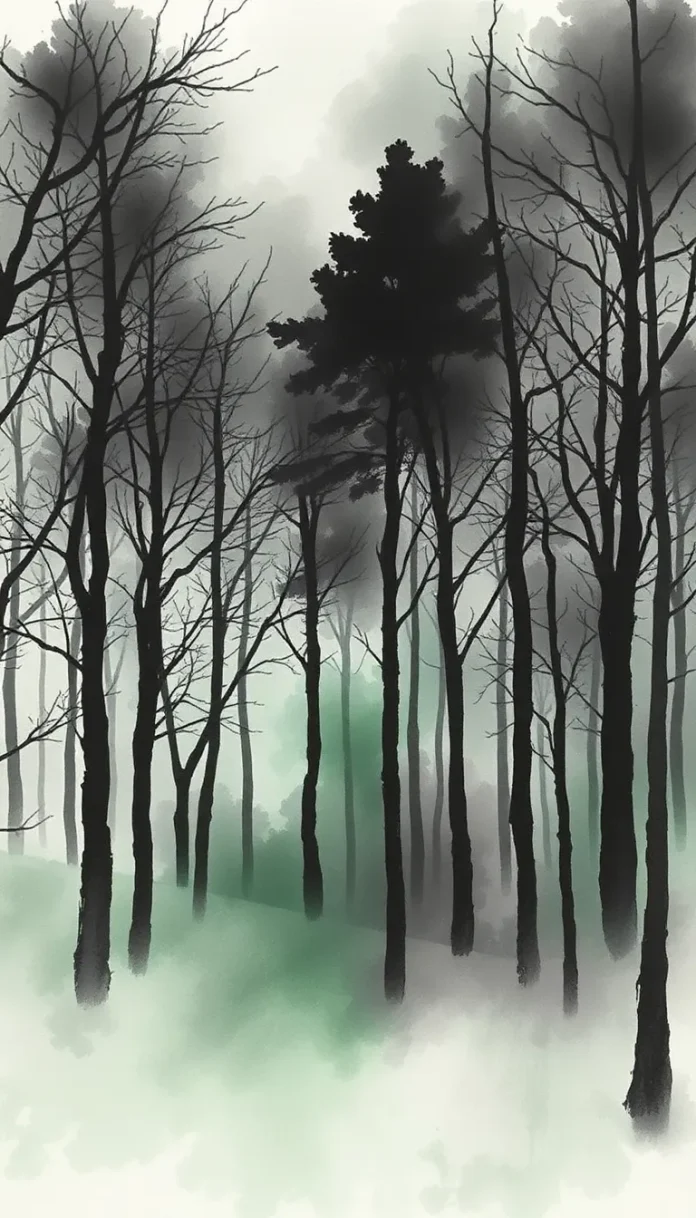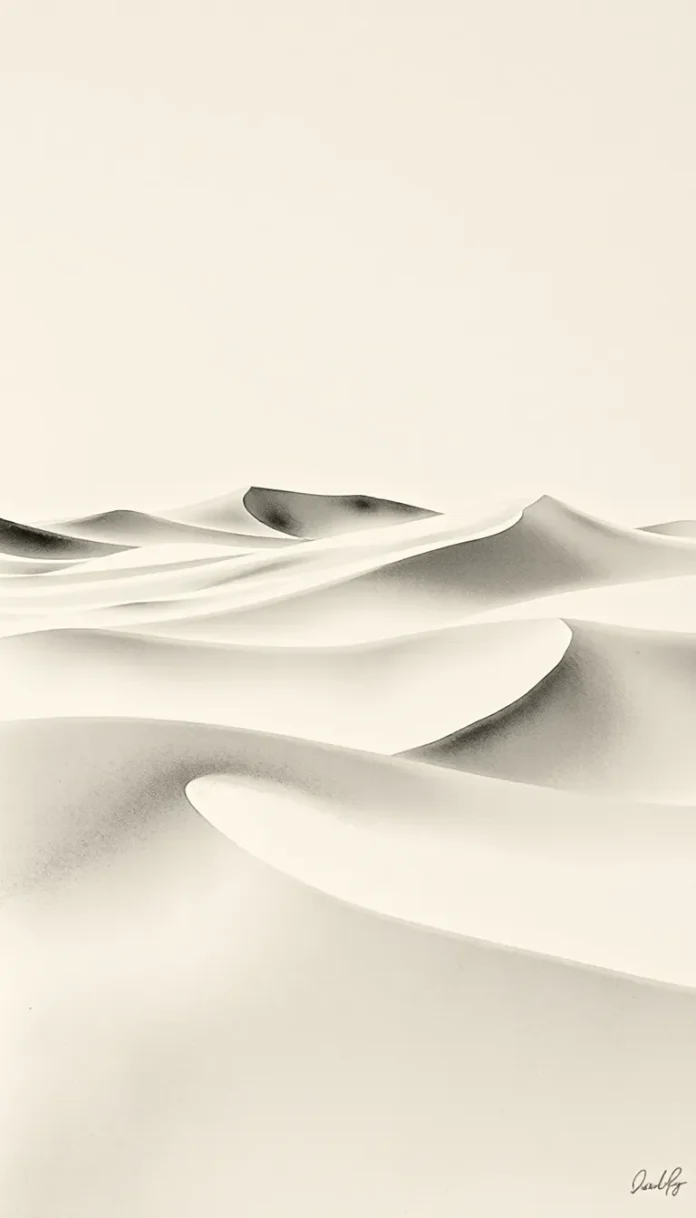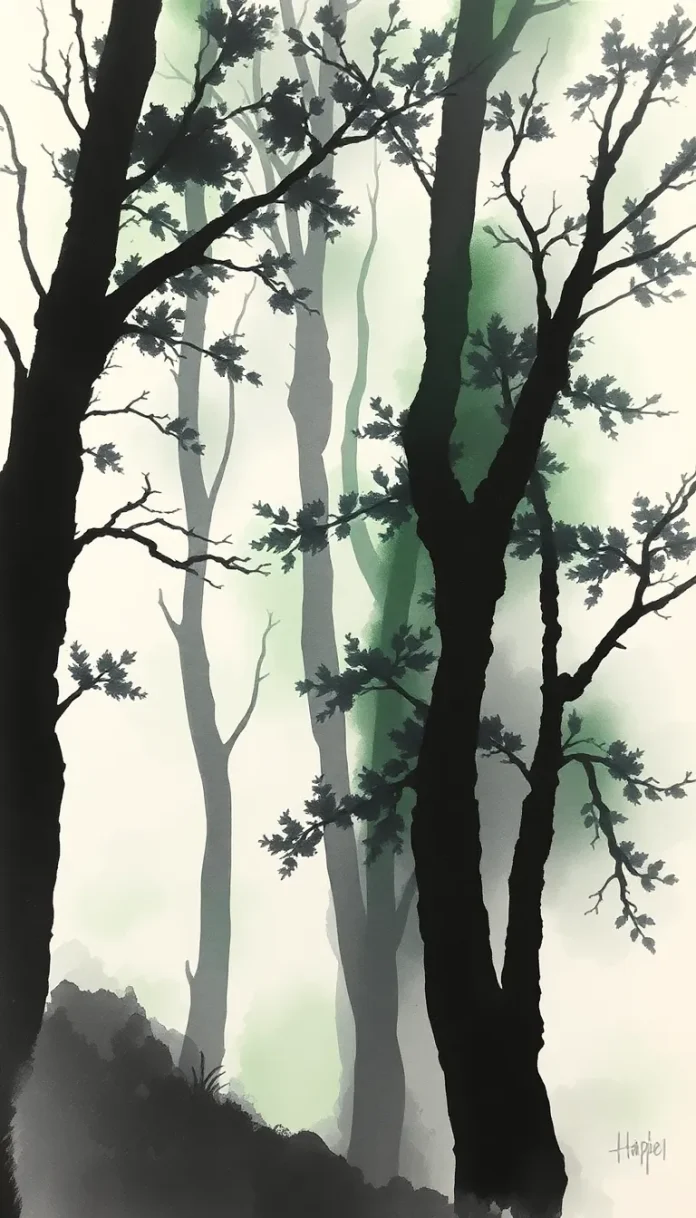The Bridge of Sighing Rain
as though the sky had cracked and wept a silver cry,
he stood—a painter with a palette drowned in gray,
his brush a wand uncharged, his soul a parched well.
The rain, relentless scribe, etched tales on every stone,
while shadows pooled like ink where lamplight dared not roam.
A pilgrim of the prism, he sought the face of Truth,
not in the sun’s bold gilding, nor in the moon’s cool sleuth,
but here, where rivulets wove whispers down the rails,
and fog, a spectral lover, clung to rusted nails.
“What color,” murmured he, “can hold a heartbeat’s weight?
What stroke immortalizes what the night erases?”
The bridge groaned low—a dirge from iron lungs—
as through the mist there bloomed a silhouette undone:
a woman, veiled in rainfall’s shifting gauze,
her steps a sonnet paused, her cloak the tempest’s clause.
She paused where railing met the void’s embrace,
her gaze a lantern cast on some far, secret place.
“You paint,” she spoke, not turning, voice a viol’s sigh,
“yet canvases stay barren as a starless sky.
You chase the ghost of beauty through a hollow glass,
but Truth is not a mistress—she’s the wound, the gasp.”
The painter gripped his brush—now trembling, now alive—
“Then show me,” pleaded he, “where her dark currents thrive.”
She turned, and in her eyes, the storm found its nucleus:
violet tempests, centuries deep, their anguish viscous.
“I am the echo trapped beneath the bridge’s throat,
the unanswered question every raindrop wrote.
Walk with me, artist, through the labyrinth of drips,
and see your holy grail dissolve between my lips.”
They wandered as the river, black and murmurous,
swallowed rain like secrets too perilous to discuss.
Her fingers traced the droplets on his weathered sleeve,
each one a stanza from a dirge she meant to leave.
“There,” she breathed, pointing where the waters churned,
“my truth lies—in the depths where light is spurned.”
He stared into the maelstrom, saw no shape, no line,
only a void that pulsed like veins of soulless wine.
“This is your inspiration,” laughed she, thin and dire,
“the rot beneath the petal, the ash beneath the fire.
Paint *this*—the scream that lingers after hymns have died,
the crack in every mirror where our frailty hides.”
His palette clattered down, ochre bled into coal,
as lightning stitched the clouds with threads of tarnished soul.
“You ask me to immortalize despair’s embrace?”
“No,” she wept, “to find the art in erasure’s grace.
For Truth is but the scar where understanding fails—
now catch its fleeting shadow ere it snaps its trails.”
And then she stepped—oh, stepped!—into the railing’s breach,
her form a comma curling where no speech meets speech.
The river took her gently, as though she were its own,
a petal from a rose that never had been known.
He reached, but grasped only her fading, phantom scent—
a blend of midnight lilies and spent sacrament.
Alone beneath the bridge where rain still stabbed the earth,
he dipped his brush in puddles—graves of fractured mirth.
At last, he painted: not the form, nor shade, nor light,
but absence, vast and humming, stretching out of sight.
A figure, half-erased, where pigment dared not stay,
her face a rift of canvas, leading the eye astray.
They found him at dawn, frost-kissed and gloriously mad,
clutching his masterpiece to a heart long winter-clad.
“Behold!” he rasped, “The Truth no mortal hand can hold—
the beauty of the question that rends the fabric whole!”
But critics saw a void where genius ought to bloom,
and cast his work to attics, sealed in scorn’s cold tomb.
Yet on nights when storms conspire with the Thames’ throat,
a shadow treads the bridge where rain still writes its note.
Two phantoms pace the iron, their dialogue the rain,
seeking in the tempest what daylit worlds restrain.
And in the river’s heartbeat, where her laughter sank,
lives the art no gallery dares hang—
the portrait of the Truth that breathes but cannot stay,
the masterpiece that crumbles if touched by light of day.


